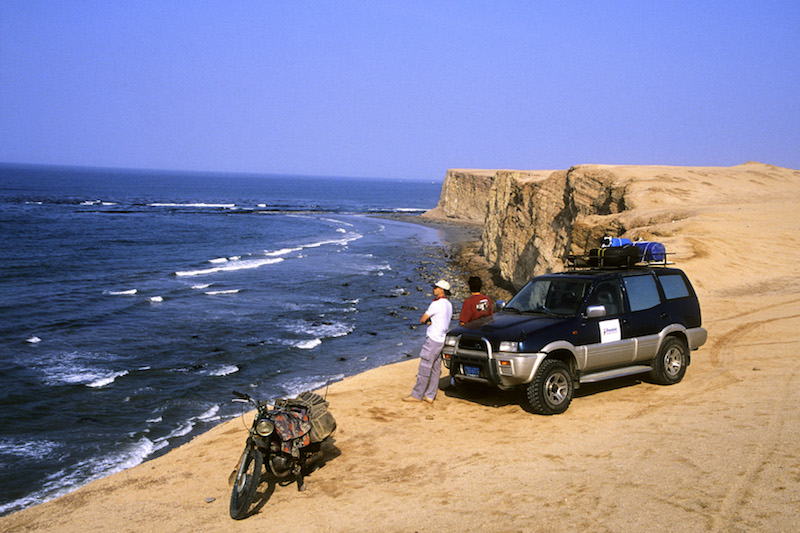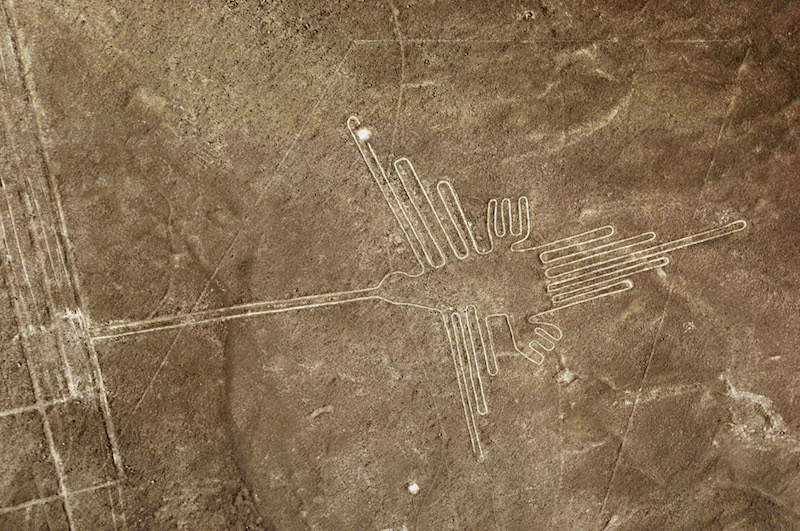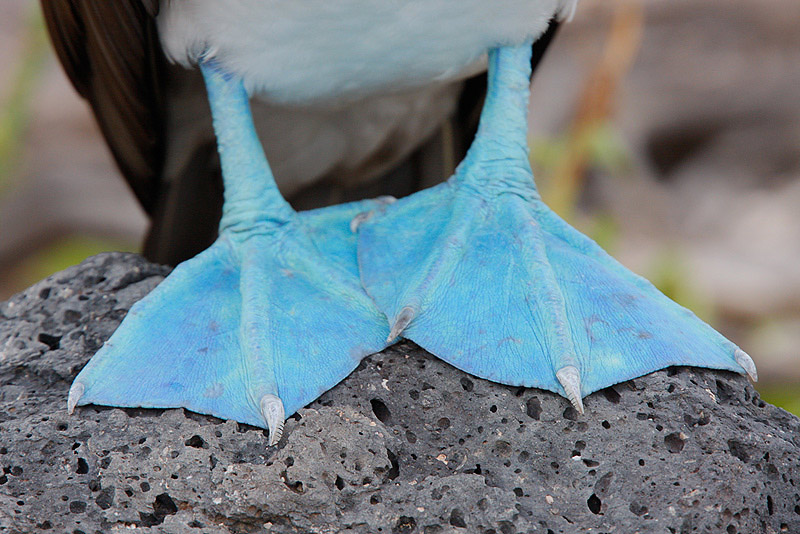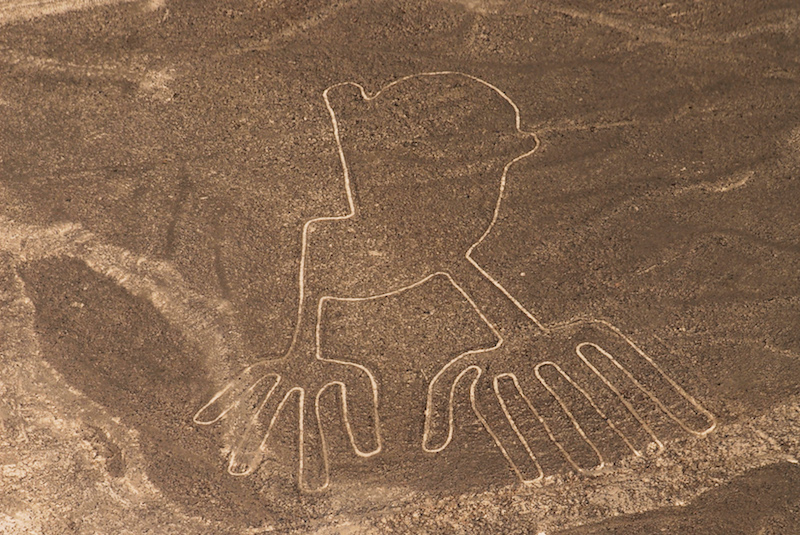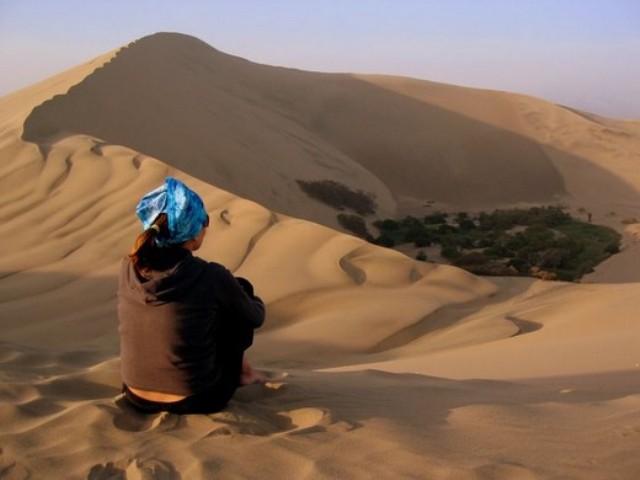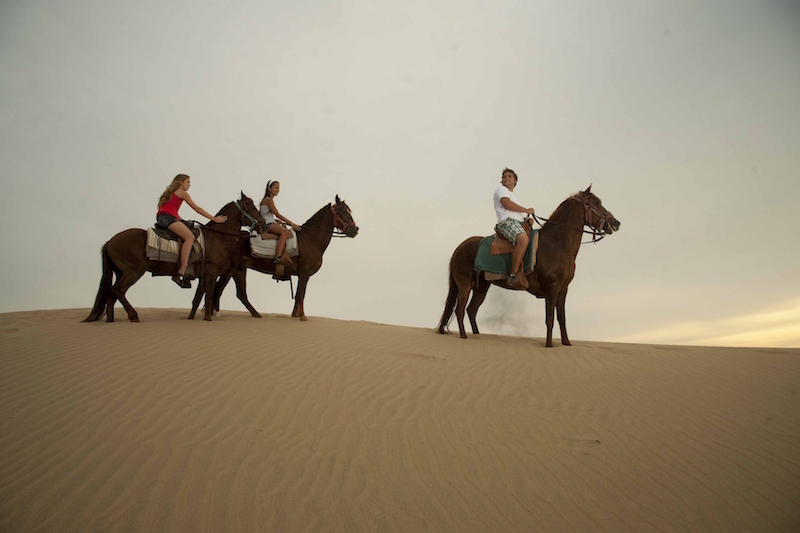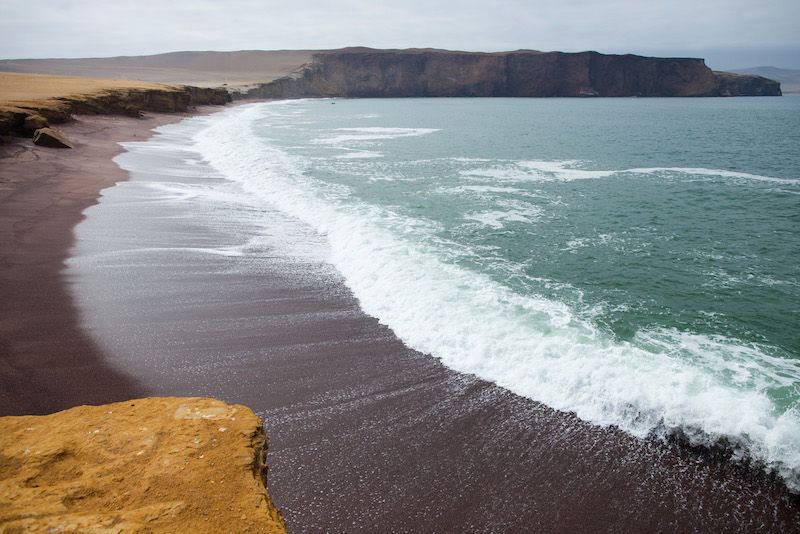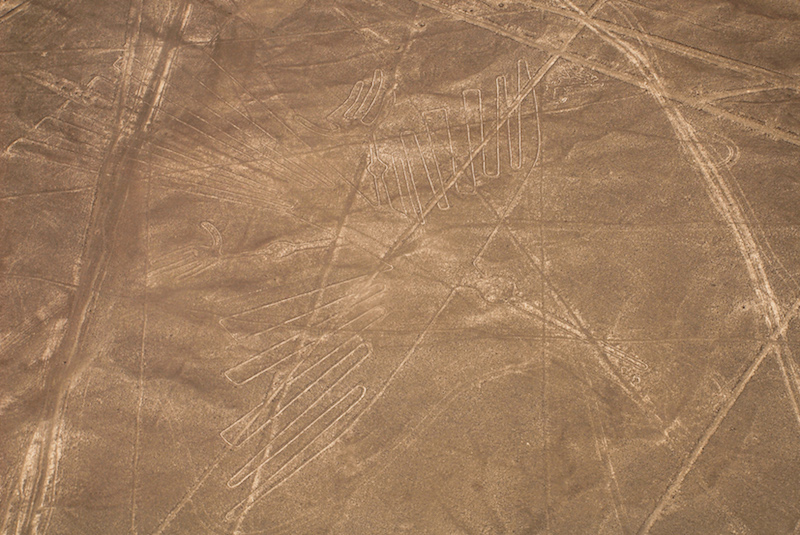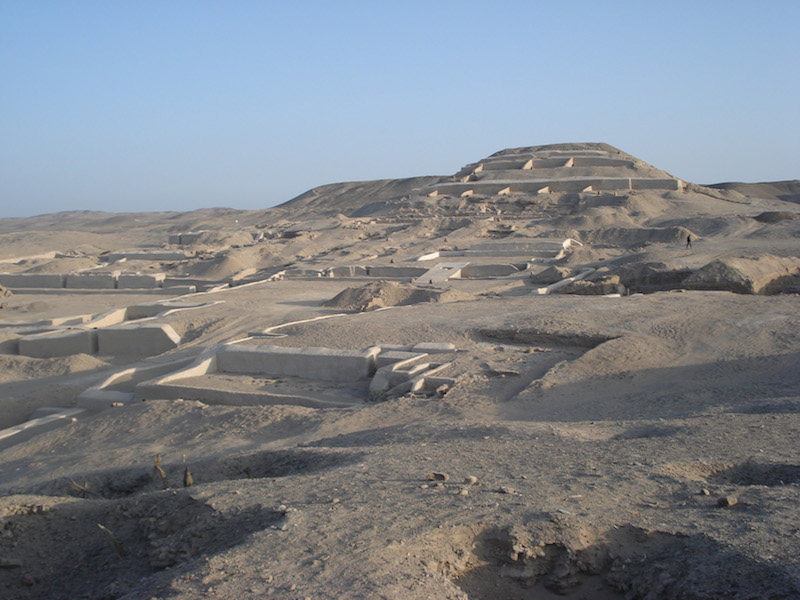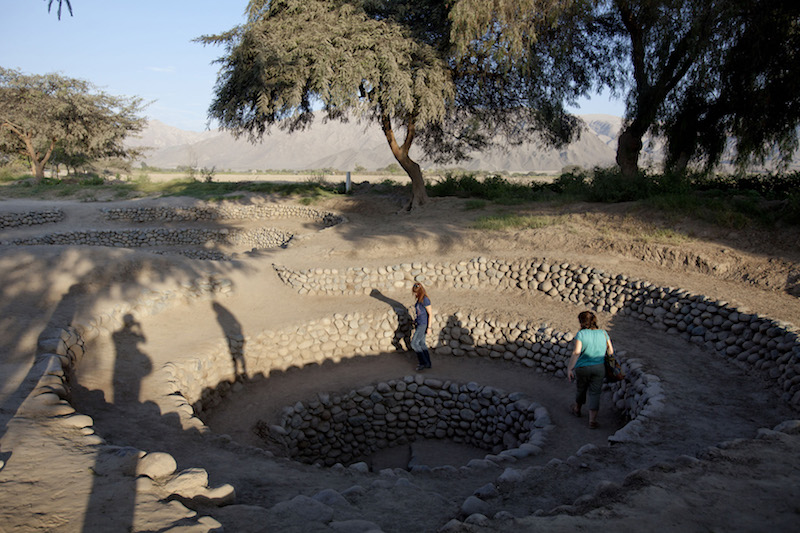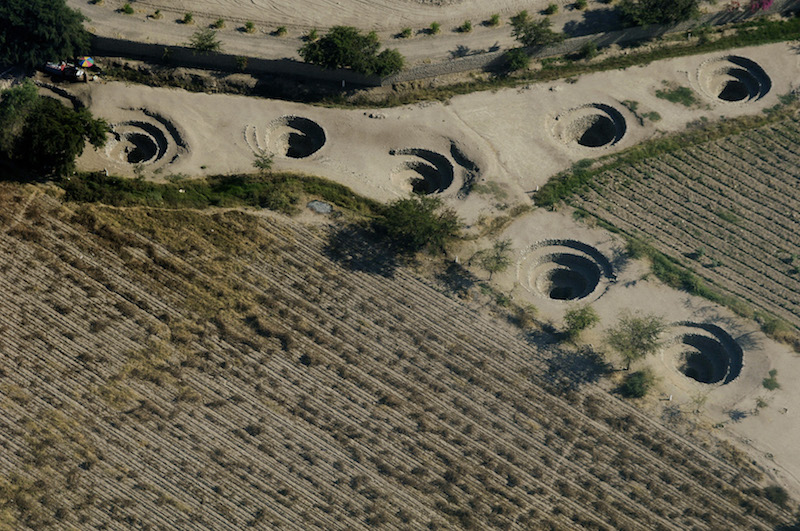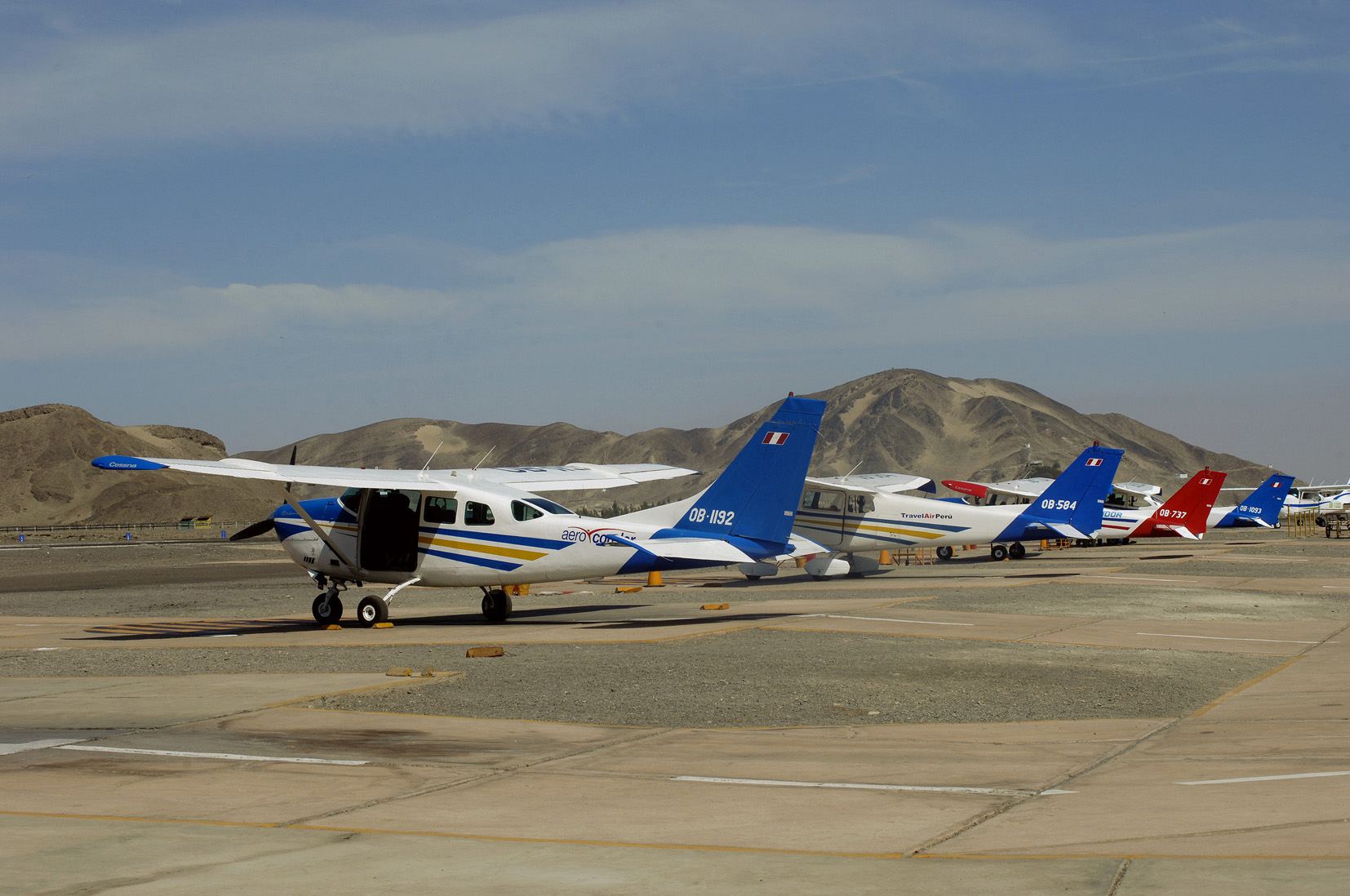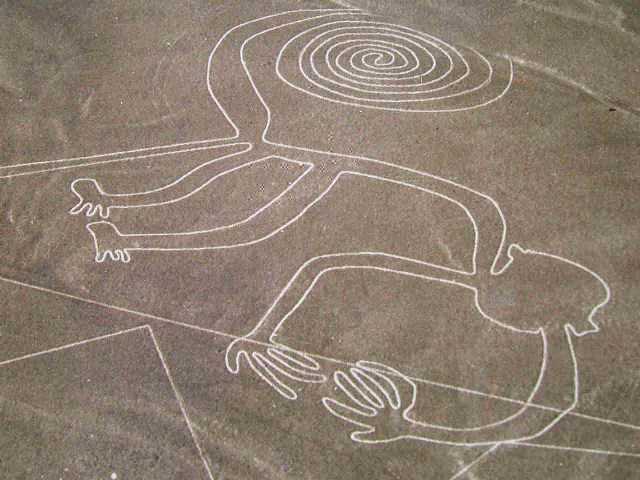Paracas & Nazca Lines 3-Day Tour
Overview
The sleepy fishing village of Paracas has been transformed in recent years into a coastal resort with a surprising number of international-standard hotels.
For many Peruvian visitors, it offers sun and sand at only a few hours by car from Lima; but the area has a surprisingly wide variety of unique attractions.
Paracas is the gateway to the Paracas National Reserve, an eclectic sanctuary that includes beaches and bays, coastal mountains and sun-baked desert, as well as some 100 small archaeological sites, belonging to the pre-Columbian Paracas culture.
About two-thirds of the protected land is actually offshore, the only Peruvian park to have both marine and terrestrial elements, and the itinerary includes visits by vehicle and by boat, to make the most of this.
The birdlife is astounding: thousands of grebes, boobies, terns, petrels, gulls and other seabirds; flights of pelicans soaring over the beach; flamingos, egrets and herons stepping gingerly through salty lagoons behind the shore; and even strange little feathery creatures like the burrowing owl.
South American fur seals and sea lions monopolise many of the shoreline rocks and islands, but especially the Mirador de Lobos. Sea otters, desert foxes and Humboldt penguins are also part of the Paracas wildlife mosaic.
Moving inland, there are magnificent sand dunes that are an ideal location for an exhilarating visit by sand buggy.
And last, but not least, the mysterious Nazca Lines can be viewed in a light aeroplane, taking off from the nearby Pisco airport.
We have fitted all these attractions into an intense three-day visit, that can be taken as a side tour from Lima, or on the way down the coast to Arequipa and beyond.
If you prefer a more leisurely pace, we can certainly arrange this.
Paracas & Nazca Lines 3-Day Itinerary Outline:
Day 1: VIP bus to Paracas; Tour to Paracas Reserve. Overnight in Paracas.
Day 2: Ballestas Islands tour; Drive to Pisco airport for Nazca Lines overflight; Sand Buggying. Overnight in Paracas.
Day 3: Bus to Lima; Transfer to Lima hotel.
Prices
Below prices are per person, based on double occupancy of 3* hotel in Paracas, with transport from/to Lima, a Nazca Lines overflight & excursions in a small group.
| Itinerary | Length | Prices From |
|---|---|---|
| Nazca & Paracas Standard | 3 Days | £556 / $703 |
Itinerary
Detailed ITINERARY:
Day 1: Lima - Paracas; Tour of Paracas Reserve
We pick you up early from your Lima accommodation, in order to make an early departure from Lima, travelling south down the iconic PanAmerican Highway, passing the little-known Inca ruins of Pachacamac on the way.
The urban sprawl soon gives way to desert, as the road hugs the Pacific coast for much of the journey.
A Pacific beach in Paracas Natural Reserve.
We arrive in Paracas around midday, and after settling in to our beach-side accommodation, and having some lunch (not included), we will set off on a half-day exploration of the Natural Reserve of the Paracas Peninsula, for the afternoon.
The Paracas Peninsula is striking, combining desolate desert with bold seascapes. A large amount of wildlife is found in the area – sea lions, penguins, turtles and a wide variety of birds.
The evening is at your leisure. You can choose whether to relax in your hotel or explore the bay area, which has a selection of waterfront restaurants (with great seafood) and bars.
Day 2: Paracas: Ballestas Islands, Nazca Lines & Sand-Buggying (Breakfast)
Today is full of variety and interest.
First, after breakfast, we take a boat cruise from Paracas' small port to the Ballestas Islands, where we can see marine mammals and birdlife up close, and in huge numbers.
We also take a look at some ancient etchings in the coastal cliffs, including the mysterious Candelabra .
The Owl Man - one of the Nazca Lines.
Once back on shore, we drive to Pisco aerodrome in order to take a 90-minute flight in a light aircraft over the Nazca Lines, to be able to see these mysterious shapes in all their enigmatic majesty.
The giant figures include elongated triangles, animals such as a hummingbird, a monkey, a spider and a condor ... and even an alien-looking owl man!
Despite 50 years of study, there is still no proven theory as to the origin and purpose of the Nazca Lines. Many people have studied the lines - most famously, Maria Reiche, a German mathematician, who spent the greater part of her life doing research in Nazca.
What is known is that the Lines were begun around 400 B.C and work continued on them for another thousand years.
After the overflight, we return you to Paracas, where you have time to relax and have lunch.
A dune buggy near Huacachina.
Then, in the late afternoon, we take you to the desert that stretches to Ica and Huacachina, to take part in a sand buggying tour.
The dunes stretch as far as the eye can see, and some are close to 100 m (328 ft) in height. Driving over them in a powerful buggy is not only exhilarating, but also a great way to experience the area.
There is also the chance to try your hand at sand boarding, with all equipment provided and no experience necessary.
NB. The dune buggies are built for safety, and all have roll cages, seat belts and bucket seating.
Following the ride in the buggy, we take you back to your Paracas hotel for the evening.
There is the option of having a gourmet picnic dinner in the desert (at an additional cost).
Day 3: Paracas - Lima (Breakfast)
This morning, after breakfast, we head back to Lima, where we transfer you to the airport or your hotel.
Alternatively, you may like to continue south to Arequipa & the Colca Canyon.
Nazca
NB. Nazca (also spelt 'Nasca') is a charismatic little town, that can get quite lively at night, and has many more vestiges of the Nazca culture to see, aside from the headline-grabbing Lines:
Chauchilla Cemetery: a chance to see how the Nazcas mummified their dead.
Maria Reiche Planetarium: has evening showings, every day, that explain more about the Nazca Lines and their relationship with astronomy, as espoused by Maria Reiche.
Ceremonial City of Cahuachi: a huge, ancient pilgrimage centre 28 km (17 miles) southwest of modern Nazca containing some 34 pyramids scattered over 24 sq km (9.5 sq miles).
Cantalloc: an extensive series of subterranean aqueducts (puquios in Quechua) used to irrigate this desert region.
Antonini Archaeological Museum: informative museum, with a collection of Nazca pottery and textiles.
Cerro Blanco: a whitish mountain which, at 2,078 m (6,847 feet), is labelled the world’s largest sand dune.
If you would like to visit some or all of the above, let us know, and we can arrange.
Map
Reviews
What our clients say about the Paracas & Nazca Lines trip:
“Sand boarding was fun - right at sunset, so dramatic sky.
Nazca was pretty amazing. Several of us got sick in the plane, so that was a bit rough. Definitely can get motion sickness. But seeing it from the air was amazing.
”
“We spent the last part of our journey in Paracas and Ica. After the adventures of the jungle and the mountains, it was a gentle and relaxing finish.
We absolutely loved the two hotels - La Hacienda Bahia Paracas and the Hotel Vina Quierolo. Both were lovely and elegant with superb bar and dining areas. The pools in both were magnificent, as were both the staff and service. Highly recommend both hotels!
In Paracas we enjoyed seeing the Nasca lines as well as our visit to Ballestas island and Paracas National Park. The landscape and scenery were astonishing.
In Ica, the sand buggy trips are a must! Great fun and again, lovely scenery. ”
“The hotel is Paracas [San Agustin] was comfortable with pool and gym and restaurant/bar. Rooms were nice and had balconies.
... sand dunes in Paracas were favorites!”
“Paracas is a small fishing village right on the ocean.
We stayed at the Los Frayles Hotel on the second floor overlooking the ocean. Perfect!
That evening we walked around the village and enjoyed the outdoors and a nice dinner at the hotel.”
“Once our fantastic stay at Muyuna was over, we flew back to Lima and took a bus down the coast to Paracas.
We hired bikes and went for a ride in Paracas National Park where we found a number of impressive viewpoints out over the South Pacific.
The next morning we headed out to Islas Ballestas ‘the poor mans Galapagos’. The islands certainly lived up to its reputation as it was teeming with bird life, I had never seen so many in one place.
We managed to spot a number of sea lions and Humboldt penguins among the thousands of cormorants, inca terns, seagulls, boobies etc. It was a really special experience and my only criticism is that I wished the tour had spent more time there.
Huacachina was our next stop, the amazing desert oasis. We decided to take a walk up the highest sand dune on our arrival and didn’t anticipate how difficult walking uphill in sand would be.
Once we made it to the top though, the walking was completely worth it for the view over the town and we sat up there to watch the sunset.
We watched Peru’s first game of the Copa America in a local restaurant and followed their journey all the way to the final during our time in Peru. There was a real buzz about the country as the team were performing so well.
The next morning we headed off to Tacama vineyard in Ica, we learned about the history of wine in Peru and the vineyard itself before taking a tour and sampling various wines and piscos.
We spent the afternoon sand skiing, which might not have been the most sensible activity to follow our morning but we came out unscathed. It turned out to be much harder than on the snow but still manageable and was great fun flying across the dunes in the dune buggies to make it to the top of each slope.
We boarded another bus and made the journey to Nazca. ... The theories behind the lines were incredibly interesting and we really got into the mystery of it all. The flight was a great experience with very professional and knowledgeable pilots.
Once we landed and had lunch, we headed off to both the Chauchilla Cemetery and Cahuachi Pyramids which was a great way to pass the time before our overnight bus to Arequipa.”
A video of Paracas National Reserve and The Ballestas Islands made by Fry & Burt.


